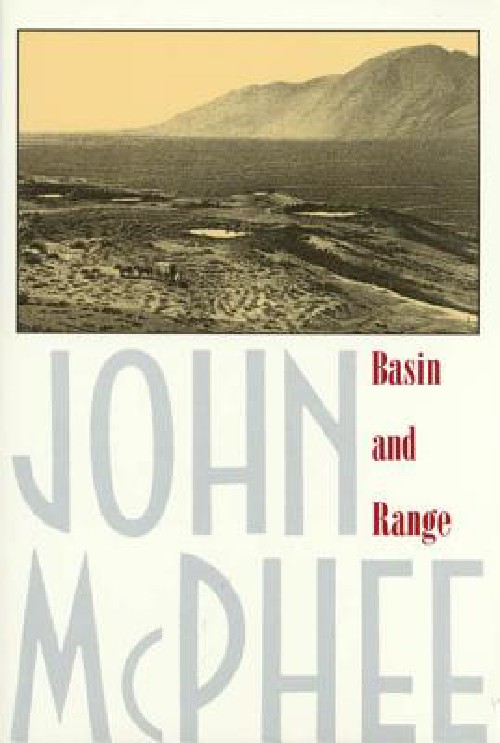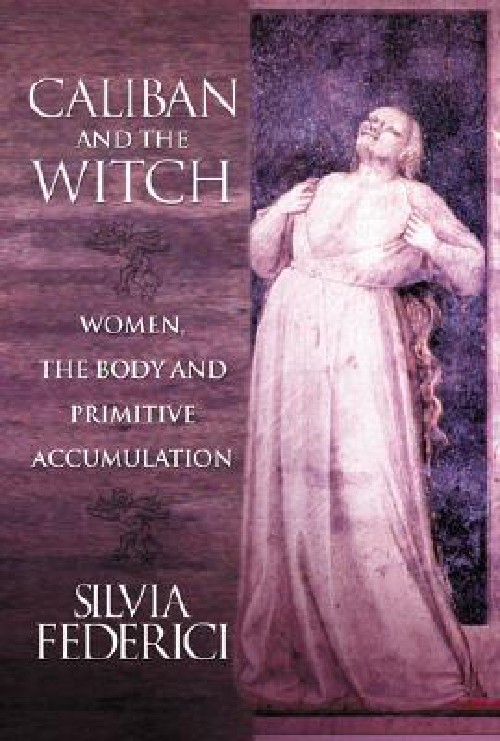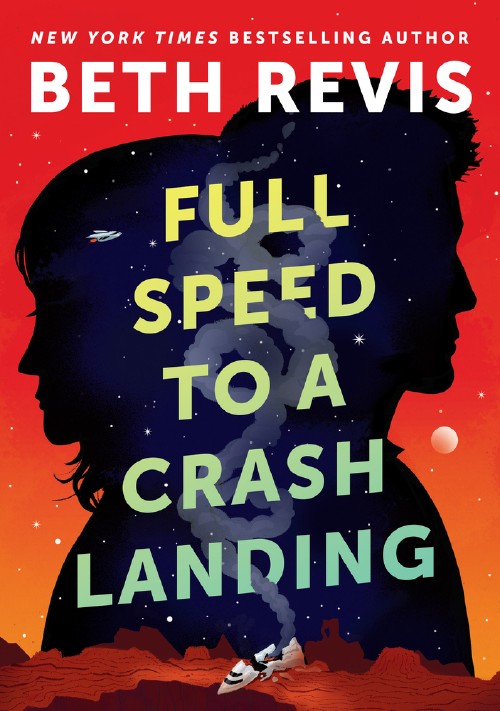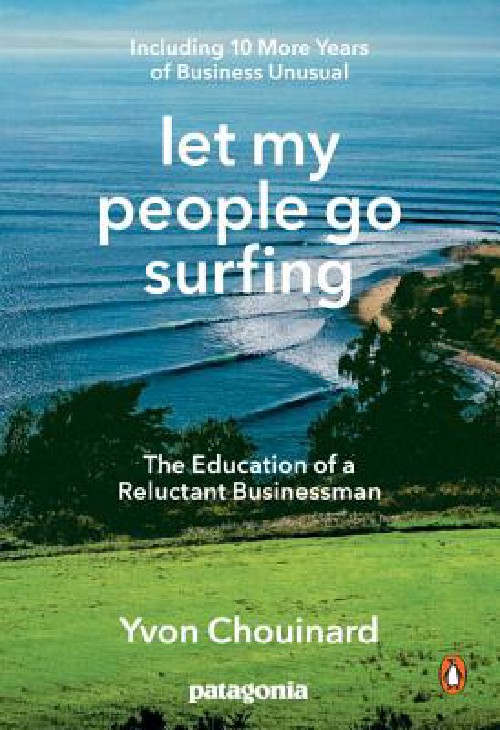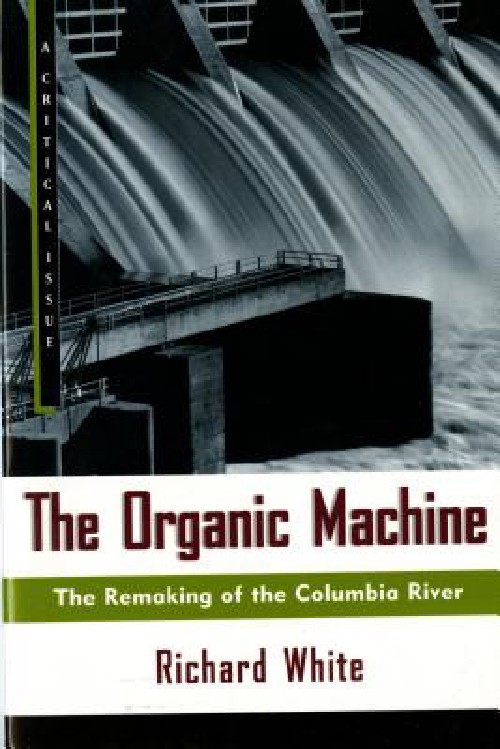
The Organic Machine
Copyright 1996, Hill & Wang
Climate Change, Cultural Analysis
This book is short; only 112 pages, but it is a fascinating argument against the separation of man from nature that typically informs our cultural ideas about how we make the world.
My argument in this book is that we cannot understand human history without natural history and we cannot understand natural history without human history. The two have been intertwined for millennia. As I have gotten into middle age, history has seemed less and less about things or ideas or individual persons and more and more about relationships. Nature, at once a cultural construct and a set of actual things outside of us and not fully contained by our constructions, needs to be put into human history. Nature, to paraphrase Donald Worster, is salmon swimming, the river flowing, and, I would add, humans fishing. In aiming for a relationship, I mean to do more than write a human history alongside a natural history and call it an environmental history. This would be like writing a biography of a wife, placing it alongside the biography of a husband and calling it the history of a marriage. I want the history of the relationship itself. [introduction]
This is a book which seeks to blur boundaries, emphasize impurity, and find, paradoxically, along those blurred and dirty boundaries ways to better live with our dilemmas. What this book suggests is that if we want to understand what we have done and how we have acted in nature, we might want to spend more time thinking about Ralph Waldo Emerson and Lewis Mumford and less about Henry David Thoreau and John Muir. We might want to look for the natural in the dams and the unnatural in the salmon. The boundaries between the human and the natural have existed only to be crossed on the river. [intro]
Spatial arrangements matter a great deal in human history. They reveal the social arrangements that help produce them. The repeated conflicts at the Dalles and the Cascades revolved around a particular organization of space. Whites regarded the space at the Cascades and the Dalles as open, as culturally empty. Indians regarded it as full. In a space that brought together many different peoples, Indians expected gifts to mediate and smooth passages through this social maze. Too often whites replaced gifts with force; they resented what they perceived as theft and pillage. The space became uniquely violent. [p15]
When the salmon first appeared, Indians shed its blood ritually: they consumed it ritually; they preserved the bones. Sometimes the ritually treated blood and bones were restored to the river. To catch salmon, the Astorians had to observe ritual prohibitions. They could not cut salmon crosswise, and if cooked, the salmon had to be consumed before sundown.
The rituals along the Columbia took the biological necessity of obtaining the caloric energy needed to live and elaborated it into a web of social meaning and power that took on consequences of its own. Both men and women caught and ate salmon, but not equally. Ritual restricted the movements and actions of women far more than those of men. The rituals connected the taking of fish with the privileged position of men over women and reinforced that position. They gave men the credit for bringing salmon to the people and placed most of the burden of the failure of the salmon runs on women. [p20]
But all these towns and villages, all these “tribes” and territories, were porous. The lower Columbia was not a world of tribes. The basic social unit was the village or town organized around a core population ofrelated males. People ebbed and flowed in and out of these settlements according to season. Summer sites attracted families related through women. Such movements seasonally fragmented winter villages as people moved toward the Columbia in summer; away from it in winter. People could not go wherever they chose. Space was not empty or free. Movements demanded connections, and the strongest connections came through the out-marriage of women. Kin connections secured usufructary rights at fishing places and at wapato grounds. This was a society of dense networks of relations, and the salmon fisheries formed a basic node where the lines of human relationships intersected. The possibility of taking salmon in large numbers drew people to the fisheries from a wider region. When the salmon ran, thousands of people flocked to the Columbia fisheries from the interior. At the Dalles the permanent population of roughly 600 swelled to as high as 3,000 during the peak of the fishery. [p21]
Lewis and Clark presumed a market which reduced everything in the world to an equivalence. Making things equivalent did not mean making everything equal in value, but it did mean that any good could theos fetically be traded for any other good. But this was not true on the Columbia. Food normally moved only in exchange for other types of food. The caloric energy of fish was the great wealth of the fishing places, but it could not readily be translated into other forms of wealth with higher prestige value. Food had a different social meaning than did slaves, dentalium shells, or canoes.
Exchanges of food suggested an ongoing relationship rather than a single act in which a person sought advantage. And thus at the Dalles, the great mart of the Columbia, fish occupied only a limited sector of exchange. Those who flocked there to trade came for horses, buffalo robes, beads, cloth, knives, and axes. They traded and gambled while the huge yields of fish supported their numbers. Those who came for fish came because they had the kin connections that allowed them to share the fishery and take their own fish. They created the huge stocks of pounded and dried salmon that Lewis and Clark saw. This salmon would see them through the winter. And because the fish had expended some of their fat in reaching the Dalles, salmon dried there had a lower oil content and would keep better than fish caught lower down. This was prime dried salmon and would be traded, usually for other types of food, up and down the river. [p23]
But pull back a little, widen your vision, and the changes become apparent. Canneries had helped organize an old set of tasks in a profoundly new way. Even partially mechanized canneries so greatly increased the scale of everything-time, space, organization, and energy as to make the Indian harvest seem distant and unrecognizable. Whereas harvest, manufacture, and transport by the Indians had remained largely nonmechanical and used only small increments of en-ergy, the canneries (despite their limits) depended on steam engines for manufacture and transport. Whereas most salmon preserved by Indians usually lasted no more than six months, canned salmon lasted for many years. Whereas the Indian trade in preserved fish remained within the region, the canneries shipped fish around the world. Whereas the labor of producing dried salmon depended largely on the cooperative labor of Indian kin groups, the canneries organized hundreds of workers related to each other largely by their work itself and created new tasks for them. [p32]
A failure to recognize how the river was socially marked and controlled can lead to basic mistakes. Too often, economic models in which the social and historical hardly figure at all have been relied on to explain declining fisheries. The fisheries are a commons, this argument goes; the problem they faced was one of human nature. Each fisherman seeks to maximize his return; each seeks more efficient ways to compete. No one has an incentive to maintain stocks, for they have no guarantee that others will not reap the benefits.
This is what Garrett Hardin referred to as the tragedy of the commons: the inevitable tendency of consumers of a common resource to over-exploit it. But historians know that Hardin’s model of the commons is an invention. No such simple commons has ever operated. It never existed on the Columbia. In historical practice users of common resources set up rules and limits; they created customs; they limited access, Fishermen made the actual Columbia a complicated patchwork of competing claims and practices. Indians possessed treaty rights. Gillnetters controlled access to particular drifts: stretches of the river where they cast their nets and floated downstream. Fixed-gear men with their pound nets commandeered space on the river. Their very equipment fenced out others. Fish wheels took over old Indian fishing sites and pushed aside the Indians, despite the treaty rights which promised them a particular share of the commons. [p39-40]
Preserving salmon was, however, as much a social and cultural matter as a biological or economic one. On the river humans struggled to turn space into property and salmon into a commodity, but this was only part of the transformation of nature taking place. In their dying, salmon revealed constellations of competing social values. Understanding the fate of salmon involves understanding complicated and particular social struggles and not some universal human nature at work in an undifferentiated commons. [p43]
The new hatcheries that proliferated in the early twentieth century operated uninhibited by any actual knowledge of the life cycle of salmon. By 1920 it had become apparent, as one Bureau of Fisheries study put it, that “the hatcheries probably inflicted as much, or more, damage to the salmon runs than they had service of value.”
By then the fishery was taking on an almost Frankensteinian form. Humans had begun to turn something natural into something mon-strous. For thousands of years Indian peoples had recognized and understood the blessings of a world in which small fish left the river, harvested the greater solar energy available in the ocean, and returned as very big fish. These fish always returned at the same time to the same place, and in their return they followed paths which took them to spots where human labor secured their capture. Indians knew these places and had developed techniques that allowed them to expend less energy on capturing fish than the whites who followed. […] And in the face of such regularity and bounty, the Americans began breeding the fish in factories and setting out to sea to catch them. Each step of the process that led to this result was logical. It was only the result that was mad. Like many kinds of madness, this one looked quite sane from the inside. One thing followed quite understandably from another until both a kind of environmental insanity and a bitter social conflict were achieved. [p47-48]
Close distinctions between boondoggles and building up the country did not overly concern western boosters. Both could provide local ben-chits. But dams on the Columbia presented a particular challenge, for they were neither boondoggles nor clear economic progress. The very benefits they provided were their major problem. Dams would improve navigation on a river where existing navigational improvements went unused. They would bring more land into production in a country where farmers were already plagued by overproduction and low prices, and they would provide immense amounts of power which no one wanted to buy. The dams lacked economic justification. [p54]
But if the goal is to understand rather than denounce, it is a mistake to read back the fate of the Columbia as a plan to denature it. Billy Clapp, the Ephrata lawyer whom Rufus Woods credited with the idea of a dam at the Grand Coulee, traced his inspiration to secondhand geology from which he learned that glaciers had once dammed the Grand Coulee. In the 1930s proponents of the dams were more likely to see the dams as mimicking nature rather than conquering it. Even engineers thought that way. [p57]
The story told simply is that human labor dammed the Columbia so that the river could do work other than its own, so that human beings could live and work differently. Many people invested admirable hopes in these dams. They fought for public control over the energy the dams produced because public power would mean more democratic control over land and resources, more fruitful lives, more pleasant work, and greater returns on labor. They foresaw more intimate human contacts with the natural world and with each other, greater independence and more cohesive communities, an end to crowding, pollution, and waste. Energy, in the form of electricity, became the great good the river could yield. These were not totally failed hopes. We have managed the river to deliver power that has improved lives; the river has also irrigated land and served as a highway for barges. But judged against the larger hopes, our efforts have been failures, and integral to them was a failed relation with nature.
What has failed is our relationship to the river. It is important that we get our metaphors right. We have neither killed the river nor raped it, although people claim both are true. What has happened is closer to a failed marriage. Nature still exists on the Columbia. It is not dead, only altered by our labor. It is the steam within Emerson’s boiler. It lies hidden in aluminum factories and pulp mills, in electric lights and washing machines. The organic and mechanical have been merged, as Lewis Mumford hoped they would, but the results have not been what he intended.
The river is not gone; it is our hopes for it that have vanished. Where Lewis Mumford once imagined utopian futures, we have the Bonneville Power Administration (BPA), a public agency that exists to transmit electricity to markets and to create markets to which it can transmit electricity. The progressive hopes it once embodied have given way to excuses; new possibilities have become hard choices. Utopianism has yielded to a self-serving bureaucratic and corporate fatalism. We have not killed the river; we have disappointed ourselves. [p60]
Lewis Mumford was not a planner, but he wrote eloquently of planning. It was a difficult task. Planning is an exercise of power, and in a modern state much real power is suffused with boredom. The agents of planning are usually boring; the planning process is boring; the implementation of plans is always boring. In a democracy boredom works for bureaucracies and corporations as smell works for a skunk. It keeps danger away. Power does not have to be exercised behind the scenes. It can be open. The audience is asleep. The modern world is forged amidst our inattention. [p64]
But no matter how rationalized the river became, how closely linked with human labor and its products, it remained a natural system with a logic of its own. When, as in 1972-73, winter storms did not produce sufficient snowpack and drought followed in spring and summer, reservoirs declined, and energy production fell. Reservoirs could not store water that nature did not produce, and as of September 1, 1973, the reservoirs were 15 million kilowatt-hours below normal operating level. There was an even worse drought in 1976. [p79]
Hanford similarly created and then blurred distinctions between the natural and the unnatural. Hanford was a factory producing a product largely unknown in nature, but it was a factory whose danger created space in which nonhuman species could survive. Nell MacGregor was astonished that sand drifts were allowed to fill the doorways of Hanford where thousands had only recently passed. She thought nature had returned. The need for secrecy kept the Hanford Reach undammed. The dangers of its production kept the land around it open, and as a result the reservation became a wildlife oasis. Only here could fall chinooks still spawn in the main channel. Eagles, black-crowned night herons, prairie falcons, long-billed curlews, a profusion of overwintering waterfowl, coyotes, deer, and other species all survived in the shadows of the reactors and processing plants. [p84]
Seen in one way, Hanford represented a transcendence of nature. It produced elements unknown in nature. It promised energy free from the limits of wind, water, and the stored solar energy of oil and coal. Seen another way, Hanford only complicated natural systems. It could not escape the movement of wind and water or the life cycles of plants and animals. It could not escape human bodies. It became another complicating and dangerous element in a vastly complicated organic machine. [p88]
The catches on the Columbia are one measure of the decline. From 1880 to 1930 the catch was 33.9 million pounds a year. From 1931 to 1948 it declined to 23.8 million. From 1949 to 1973 the yearly average fell to 10.9 million pounds. In 1993 the catch was 1.4 million pounds.
This decline has taken place despite intensive management. If any-thing, there have been too many managers. There is no fisheries equivalent of the BPA with responsibility for the fishery as a whole. The fish pass through numerous jurisdictions; what happens in one area negates efforts in another. And not all the threats to salmon are under the potential control of any management scheme. There continue to be natural systems operating without human control. [p97]
The Columbia has become an organic machine which human beings manage without fully understanding what they have created. The organic machine has, in turn, spawned a virtual river whose life influences the actual Columbia. Mumford and Emerson foresaw part of this. They grasped how the human and the natural, the mechanical and the organic, had merged so that the two could never be ultimately distinguished. We live with the consequences. [p108]
And yet simply to renounce development on the Columbia is equally to miss the point. We can’t treat the river as if it is simply nature and all dams, hatcheries, channels, pumps, cities, ranches, and pulp mills are ugly and unnecessary blotches on a still coherent natural system. These things are now part of the river itself. There are reasons they are there. They are not going to vanish, and they cannot simply be erased. Some would reduce the consequences to a cautionary tale of the need to leave nature alone. But to do so is to lose the central insight of the Columbia: there is no clear line between us and nature. The Columbia, an organic machine, a virtual river, is at once our creation and retains a life of its own beyond our control. [p109]
In the end, one of the intellectual architects of the organic machine inveighed against runaway mechanistic thinking. And certainly on the Columbia mechanistic thinking has both dominated the river and failed to control what it has produced. Machines can be disassembled. They can move from place to place. They can be put to varying uses. In turning the Columbia into a machine, we have done all of these things.
In treating the Columbia as a machine we have literally and conceptually disassembled the river. It has become to its users a set of separate spaces and parts. Fishermen see habitat. Irrigators see water. Power managers, utility operators, and those who run aluminum factories see reservoirs necessary to turn turbines. Barge owners see channels with certain depths of water. Environmentalists see brief stretches of free-flowing water. All stake a social claim to their part of the machine. None of them are concerned with the river as a whole. [p110]
People with quite specific social and economic interests are not just fighting over ownership of a piece of nature. They are fighting over something they in part create but which contains within it, at its heart, something they have not made. This unmade world is what we call nature. [p111]
The light on the dam is just as much a product of the vast natural cycles of the planet, now channeled into a piece of technology created by human labor, as the original river was. There is no easy way to disentangle the natural and cultural here.
What is real is the mixture, and we seem unable to come to terms with this even though we have created it. Mumford’s jeremiad against the megamachine recognizes that we treat nature as if it were literally a machine that can be disassembled and redesigned largely at will, as if its various parts can be assigned different functions with only a technical relation to other parts and functions. But the Columbia is not just a machine. It is an organic machine. Our tendency to break it into parts does not work. For no matter how much we have created many of its spaces and altered its behavior, it is still tied to larger organic cycles beyond our control. [p111-112]
Humans live in the world; they bring their passions as well as their interests to it. How we use nature, how we have used and will use the Columbia, are about ways of life, about work, justice, and dreams for our children. There is no retreating from that even if we wished to.
The past, like it or not, is always with us. Americans are impatient with history. But human actions on the Columbia have produced a long history, and history has consequences. Human history and the history of the river have merged to create the modern Columbia, which is at once a natural space and a social space. It is an organic machine and has to be dealt with as such. To call for a return to nature is posturing. It is a religious ritual in which the recantation of our sins and a pledge to sin no more promises to restore purity. Some people believe sins go away. History does not go away. [p112]
The logic of economists has fashioned one debacle after another. Arguments over the river proceed as if everyone speaks about one river in one tongue. But, in fact, this is a river subdivided into separate spaces whose users speak to each other in a babel of discourses: law, religion, nature talk, economics, science, and more. The experts and regulators empowered to solve the river’s problems only bare our divisions. [p113]
